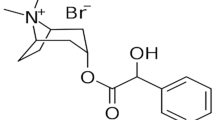Abstract
The B3LYP/6-31G(d,p) level was performed to simulated the formaldehyde (HCHO), a molecularly imprinted self-assembly system with acrylamide (AM) as the functional monomer. HCHO–molecularly imprinted polymers (MIPs) were prepared using thermally initiated precipitation polymerisation based on the calculation results. The adsorption, selectivity and stability of HCHO–MIPs were characterised and analysed. The results revealed that the complex with an orderly arrangement of HCHO and AM had the lowest configurational energy (−109.51 kJ/mol) when the ratio of HCHO and AM was 1:4, and the cross-linking agent was pentaerythritol triacrylate. HCHO–MIPS prepared using HCHO, AM and PETA in the ratio of 1:4:16 had the best imprinting effect under certain conditions: 289-K temperature, 400-mg/L HCHO solution concentration, and 400-min absorption time. The maximum clear adsorption capacity and dissociation-equilibrium constants were 54.67 mg/g and 72.46 mg/L, respectively. The pseudo-second-order kinetic equation was used to fit the adsorption capacity. Thermodynamic studies showed that the adsorption of HCHO by HCHO–MIPs was an exothermic process. The selectivity study showed that the adsorption capacity of HCHO–MIPs for HCHO was higher than that of benzaldehyde, propionaldehyde and glyoxylic acid, showing a strong specific adsorption capacity. The HCHO–MIPs prepared using this synthetic strategy exhibited better adsorption, selectivity and stability.












Similar content being viewed by others
References
Kuru CI, Ulucan F, Kuat K, Akgl S (2020) A model study by using polymeric molecular imprinting nanomaterials for removal of penicillin G. Environ Monit Assess 192:367–373
Lai C, Zhou X, Huang D, Zeng G, Cheng M, Lei QL, Yi H, Zhang C, Xu P, Zhou C, Wang RZ, Huang C (2018) A review of titanium dioxide and its highlighted application in molecular imprinting technology in environment. J Taiwan Inst Chem E 8:1–15
Shadabfar M, Abdouss M, Khonakdar HA (2020) Synthesis, characterization, and evaluation of a magnetic molecular imprinted polymer for 5-fluorouracil as an intelligent drug delivery system for breast cancer treatment. J Mater Sci 2:1–18
Suravajhala R, Burri HR, Malik B (2020) Selective Targeted Drug Delivery Mechanism via Molecular Imprinted Polymers in Cancer Therapeutics. Curr Top Med Chem 20:1993–1998
Ik D, Ahin S, Caglayan MO, Stünda Z (2021) Electrochemical impedimetric detection of kanamycin using molecular imprinting for food safety. Microchem J 160:105713–105724
Cheubong C, Yoshida A, Mizukawa Y, Hayakawa N, Takeuchi T (2020) Molecularly Imprinted Nanogels Capable of Porcine Serum Albumin Detection in Raw Meat Extract for Halal Food Control. Anal Chem 92:6401–6407
Subasinghe ND (2014) Theoretical study of phenol and hydroxyl radical reaction mechanism in aqueous medium by DFT/B3LYP/6-31+G(d, p)/CPCM model. Canadian J Chem 92:809–813
Sun JN, Liu JB, Tang SS, Jin RF (2013) Theoretical Researches on the Self-assembly System of Ciprofloxacin Imprinted Polymers. Chinese J Struct Chem 32:1204–1210
Shi Y, Liu JB, Tang SS (2015) Jin RF, Computational Simulation on Molecular Imprinted Mechanism between Salbutamol and Trifuoromethacrylic acid. J Mol Sci 31:53–58
Gao Q, Liu JB, Tang SS, Jin RF (2018) Theoretical and experimental researches on the molecular imprinted polymer formed from chloramphenicol and 4-vinylpyridine. Chinese J Vet Drug 52:52–59
Korth HG, Heer MD, Mulder P (2002) A DFT Study on Intramolecular Hydrogen Bonding in 2-Substituted Phenols: Conformations, Enthalpies, and Correlation with Solute Parameters. J Phys Chem A 106:8779–8789
Liu JB, Zhao WS, Wang GY, Tang SS, Jin RF (2020) Simulation of Phenobarbital Molecularly Imprinted Polymerization Self-assembly System and Its Adsorption Property. Anal Methods 12:813–821
Liu JB, Zhao WS, Tang SS, Jin RF (2019) Theoretical Design and Adsorption Properties of Molecularly Imprinted Polymers Obtained from Chloramphenicol and Acrylamide. Chem Res Chinese Universities 36:1–6
Zhao WS, Liu JB, Tang SS, Jin RF (2020) Theoretical research of molecular imprinted polymers formed from formaldehyde and methacrylic acid. J Mol Model 26:1–8
Paizs B, Suhai S (2015) Comparative study of BSSE correction methods at DFT and MP2 levels of theory. J Comput Chem 19:575–584
Sheikhi M, Shahab S, Filippovich L, Dikusar E, Khaleghian M (2018) DFT Investigations (Geometry Optimization, UV/Vis, FT-IR, NMR, HOMO-LUMO, FMO, MEP, NBO, Excited States) and the Syntheses of New Pyrimidine Dyes. Chinese J Struct Chem 37:1201–1222
Oliveira BG, Pereira FS, Araújo RCMUD, Ramos MN (2006) The hydrogen bond strength: new proposals to evaluate the intermolecular interaction using DFT calculations and the AIM theory. Chem Phys Lett 427:181–184
Anil K, Shruthi DL (2021) The nature of the chemical bond in sodium tungstate based on ab initio, DFT and QTAIM topological analysis of electron density. Mater Today: Proceedings 44:3127–3132
Bader R (1991) A Theory of Molecules. (Book Reviews: Atoms in Molecules. A Quantum Theory.) Science 252:1566–1567
Lipkowski J, Ross PN (1994) The Electrochemistry of Novel Materials. VCH
Acknowledgements
The Science and Technology Development Planning of Jilin Province (20200201202JC) is gratefully acknowledged.
Funding
The Science and Technology Development Planning of Jilin Province (20200201202JC).
Author information
Authors and Affiliations
Contributions
Junbo Liu: Conceived and designed the experiments, Funding acquisition. Wensi Zhao: Performed the experiments, Writing—original draft. Hanqi Chang: Analyzed the data. Dadong Liang: Analyzed the data. Shanshan Tang: Conceived and designed the experiments, Writing—original draft. Ruifa Jin: Provided the software.
Corresponding authors
Ethics declarations
Conflicts of interest
The authors declare that they have no known competing financial interests or personal relationships that could have appeared to influence the work reported in this paper.
Additional information
Publisher's Note
Springer Nature remains neutral with regard to jurisdictional claims in published maps and institutional affiliations.
Rights and permissions
About this article
Cite this article
Liu, Jb., Chang, H., Zhao, W. et al. Theoretical design and preparation of molecularly imprinted polymers of formaldehyde and acrylamide. J Polym Res 28, 433 (2021). https://doi.org/10.1007/s10965-021-02724-6
Received:
Accepted:
Published:
DOI: https://doi.org/10.1007/s10965-021-02724-6




